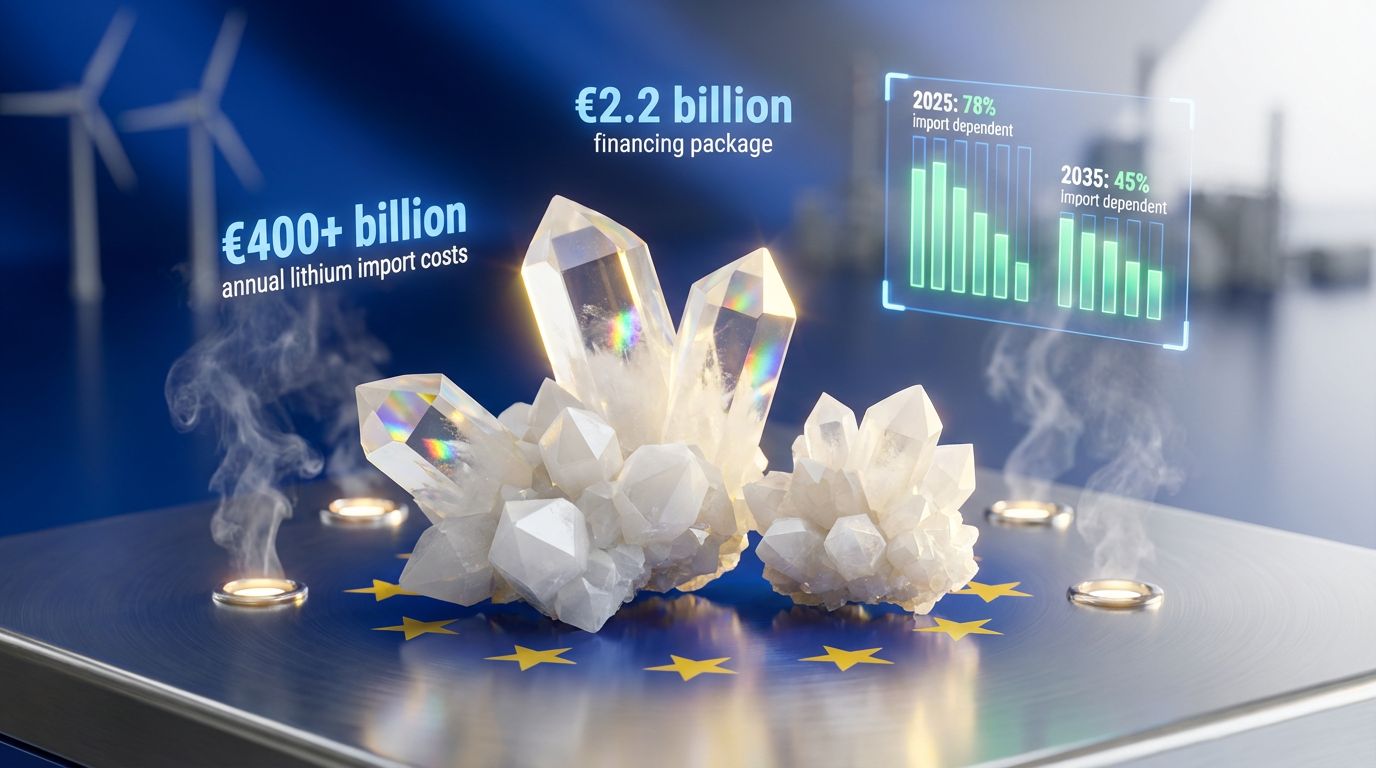How Is AI Transforming African Mining?
The Rise of Digital Transformation in African Mining
The integration of artificial intelligence into African mining operations marks a significant shift in how the continent approaches resource extraction and processing. Recent data indicates that AI adoption rates are rapidly increasing across major African mining operations, with over 60% now incorporating AI tools for exploration and production processes.
The upcoming three-day African Mining Week (October 1-3) in Cape Town is set to showcase this digital transformation in mining. Held alongside African Energy Week, this landmark event will highlight how AI implementation is helping mining companies meet government production targets across the continent.
Energy Capital & Power, organizing the event, emphasizes that "AI implementation is no longer optional for African miners competing in global markets." This sentiment reflects the growing recognition that digital tools are essential for optimizing exploration and production processes in an increasingly competitive global commodities market insights.
AI algorithms are processing geological datasets at unprecedented speeds, effectively reducing exploration timelines by 30-40% compared to traditional methods. This efficiency gain represents not just cost savings but a fundamental shift in how mining companies approach resource discovery and extraction.
AI-Powered Mineral Exploration: Botswana Case Study
Botswana Diamonds presents a compelling case study for AI revolution in mining. The company launched an AI-based nationwide exploration program in August 2024, with remarkable results reported by March 2025.
Within just seven months, the AI system identified potential deposits across multiple mineral categories, including greenstone formations, Mississippi Valley-type lead and zinc deposits, and platinum group metals (PGMs). This discovery rate far exceeds what traditional exploration methods typically achieve within similar timeframes.
Following these AI-driven discoveries, Botswana Diamonds applied for 11 new prospecting licenses. Company Chairman John Teeling confirmed the significance of this technological approach, stating that "AI revealed mineral opportunities traditional geology overlooked." The technology identified previously unknown mineral opportunities that conventional geological assessments had missed.
Beyond the initial discoveries, the AI system identified additional targets for copper, cobalt, zinc, and gold exploration, substantially expanding Botswana's mineral portfolio potential. The system accomplished this by cross-referencing satellite imagery with soil sample data to pinpoint optimal drill sites with unprecedented precision.
Production Optimization Through AI: South African Implementation
South Africa's Kilken Platinum demonstrates AI's impact on production processes at their Thabazimbi processing plant. The implementation of AI optimization forms a critical part of their expansion plan to double platinum group metals production.
The company has set an ambitious production target of 83 kilograms of platinum group metals per month—a significant increase from pre-AI capabilities. The initial phase has already yielded impressive results, increasing output to 40kg monthly from a previous baseline of approximately 20kg.
This implementation is particularly significant given South Africa's Bushveld complex's position as the world's largest platinum group metals supplier. The complex, covering approximately 66,000km², supplies 75% of global PGMs and is also a major source of chromite, vanadium, and titanium.
Neural networks at the Thabazimbi plant optimize ore processing by adjusting crusher settings in real-time, improving recovery rates by 12%. Additionally, the AI system has reduced energy consumption by 18% while scaling output, demonstrating the dual benefits of increased production and improved sustainability.
Merchant Research & Consulting notes that "Bushveld's dominance hinges on AI-driven efficiency gains," highlighting how technological advancement is maintaining South Africa's competitive edge in global PGM markets.
What Are Platinum Group Metals and Their Market Significance?
Composition and Properties of Platinum Group Metals
Platinum Group Metals comprise six precious metallic elements: platinum (Pt), palladium (Pd), rhodium (Rh), ruthenium (Ru), iridium (Ir), and osmium (Os). These high-value materials exhibit exceptional catalytic activity and corrosion resistance, making them indispensable in automotive and chemical industries.
Their unique properties—including high melting points, stable electrical conductivity, and excellent resistance to chemical corrosion—have established them as critical materials in various high-tech and industrial applications. The concentration of PGM production in South Africa's Bushveld complex underscores the region's strategic importance to global technology supply chains.
Market Demand and Applications
The automotive sector currently accounts for 40% of global platinum demand, primarily for catalytic converters that reduce harmful emissions. Even more significant is palladium's automotive utilization, with 85% of global palladium demand coming from this industry alone.
Contrary to some predictions, PGMs maintain continued relevance in hybrid and electric vehicles. As Straits Research highlights, "Electrification trends will sustain PGM demand despite internal combustion engine declines." This ongoing demand stems from PGMs' critical role in hydrogen fuel cells and various components in electric vehicle batteries.
Beyond automotive applications, PGMs have growing industrial importance. Rhodium's use in NOx reduction systems for diesel engines represents just one example of their specialized industrial applications. As global industries increasingly pursue cleaner technologies, PGMs' catalytic properties position them as enablers of more sustainable industrial processes.
What's Next for African Mining Technology?
Future Trends in Mining Digitalization
The integration of AI with existing mining operations represents just the beginning of Africa's mining 4.0 revolution. Advanced algorithms will continue to expand exploration capabilities, with predictive analytics identifying resource deposits with increasing precision.
AI integration could reduce mining's carbon footprint by approximately 25% by 2030 through precision extraction techniques that minimize waste and energy consumption. This environmental benefit runs parallel to operational improvements, creating a dual advantage for companies adopting these technologies.
Predictive maintenance algorithms are minimizing equipment downtime, lowering operational costs by 15-20% for early adopters. These efficiency gains, combined with improved resource discovery capabilities, position digital tools as essential for meeting government production targets while maintaining environmental standards.
Investment Opportunities in African Mining Technology
Venture capital inflows into African mining technology have surged 200% from 2023 to 2025, reflecting growing investor confidence in the sector's digital transformation. This trend creates significant opportunities for technology providers and investing in mining stocks.
Interest in AI-enabled mining companies continues to grow among investors seeking exposure to both resource extraction and technology sectors. As John Teeling advocates, "AI partnerships will define Africa's competitiveness in critical minerals," highlighting how technology collaboration is becoming a strategic necessity.
The digital transformation of African mining operations provides a competitive advantage in global markets, particularly for minerals essential to emerging technologies. Companies that successfully implement AI systems can achieve cost reductions, production increases, and improved resource discovery rates—a compelling combination for investors seeking growth opportunities.
FAQ About African Mining and Digital Transformation
How is AI being used in African mining exploration?
AI algorithms analyze geological data to identify potential mineral deposits that might be missed by traditional methods, as demonstrated by Botswana Diamonds' nationwide exploration program. The technology identifies subsurface mineral patterns through geophysical data analysis, leading to the company's application for 11 new prospecting licenses.
What production improvements can AI deliver for mining operations?
As shown by Kilken Platinum's implementation, AI optimization can significantly increase production capacity. Their operation is targeting a doubling of platinum group metals output, from approximately 40kg currently to 83kg monthly. This improvement comes primarily through real-time processing optimization that maximizes resource recovery.
How important are platinum group metals to the global economy?
Platinum group metals remain critical to the automotive industry (including electric vehicles) and have numerous industrial applications. South Africa's Bushveld complex supplies 75% of global PGM needs, making it an essential resource for emission control technologies and clean energy applications. PGMs enable both emission control in conventional vehicles and new clean energy technologies.
What will be the focus of African Mining Week 2025?
The event will highlight digital transformation in the mining industry, with particular emphasis on AI implementation for exploration and production optimization across African operations. The conference will showcase how digital tools are helping mining companies meet both production and sustainability targets, positioning Africa at the forefront of mining innovation, according to the African Mining Week website.
Want to Know About the Next Major Mineral Discovery Before the Market?
Discovery Alert's proprietary Discovery IQ model instantly notifies investors about significant ASX mineral discoveries, turning complex geological data into actionable investment insights. Explore how historic discoveries have generated substantial returns by visiting Discovery Alert's dedicated discoveries page and begin your 30-day free trial today to position yourself ahead of the market.




